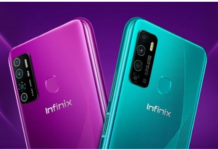Quick response codes (QR codes) are two-dimensional (2D) bar codes that make it simple for users of smartphones and tablets to access internet Content.
The QR code, which often includes a link to access a website, send an SMS text message, or call a phone number, is decoded by a QR reader. Densa-Wave, a Toyota affiliate, created QR technology. The codes were first used for inventory tracking and required a separate reader software; however, as iOS 11 and Android 8.0, QR readers are built-in to most mobile cameras.
Types of QR Readers
Here are two types of QR Readers:
Static QR
Public information is frequently distributed using a static QR Code. They are commonly seen in advertisements in newspapers and magazines, as well as on posters and billboards. The person who produced the code can keep track of information regarding the frequency with which their code was scanned and whether or not the call to action contained in the code was followed.
Dynamic QR
Dynamic QR codes (also known as unique QR codes) have more features. They are editable at any moment and even to customized to market to a particular person. More metadata is included in these codes to aid in tracking.
Reading a QR code
A QR code is easily readable with a QR reader. One alternative is to utilize a reading tool like a hand scanner, hand terminal, or fixed scanner. Smartphones and tablets with cameras are the most popular and practical tools for scanning QR codes. Installing an app from Google Play for Android or the App Store for an iPhone is required before using a smartphone to read a QR code. A long list of apps will appear if you type ”QR code reader” into the search bar. These apps may all be downloaded for free and work with different types of QR codes.
They require a smartphone with a camera to be used. The smartphone’s camera will be activated after the software has been installed, along with an on-screen framing guide. The camera can then be used to scan the QR code. Holding the camera still until a beep signals that the scan is finished can be necessary. The user will then be sent to the URL address where the information is stored from the smartphone screen.
Generating a QR Code
It is simple to make a QR code on one’s own in addition to viewing one made by another person. It is advised to create QR code on a laptop computer since it will be simpler to scan the new code with a smartphone QR reader afterward.
Of course, using a smartphone to generate a QR code is also an option, and each approach has advantages and disadvantages. A web-based utility creates QR codes on a computer. The “QR code generator” search results will show you the appropriate websites. The user can build their QR codes using the website called “QR code generator.” On this website, QR codes can be made that point to free text, a URL, contact details, or social media accounts.
Uses of QR Code
Business-to-business (B2B) and business-to-consumer (B2C) communication can be improved at a low cost by using QR codes. Popular uses include:
- Contactless dining – During the COVID-19 outbreak, many restaurants started offering paperless menus using QR codes.
- Network administrators can create a QR code for device enrollment and email it to a user to manage mobile devices. The QR code’s call to action will direct the user to download the software and guidelines the managed device needs.
- Point of Sale (POS) – Paypal has added a function to its mobile app that enables merchants to take payments using QR codes from customers.
- Making two apps work together, Videxio introduced a service that lets users join online meetings with external video endpoints simply by scanning a QR code.
Are QR Codes Dangerous?
There is no inherent danger with QR codes. They serve only as a means of data storage. However, viewing URLs recorded in QR codes can also be perilous in several ways. Just like clicking links in emails can be dangerous.
Read Also: Customer Service Channel Options for Your Business
The website address on the QR code may attempt to fool you into providing your username or password for another website. The URL might direct you to a trustworthy website and induce it to do unfavorable actions, such as granting an attacker access to your account. The URL can refer you to a malicious website that performs an unwanted action by tricking another website connected to the same device.
Conclusion
Like the one on your smartphone, a camera is required to scan a QR code. Many Android and IOS camera apps include QR scanning. Although they may carry any data, including text and graphics, QR codes are most frequently employed to store web links.










